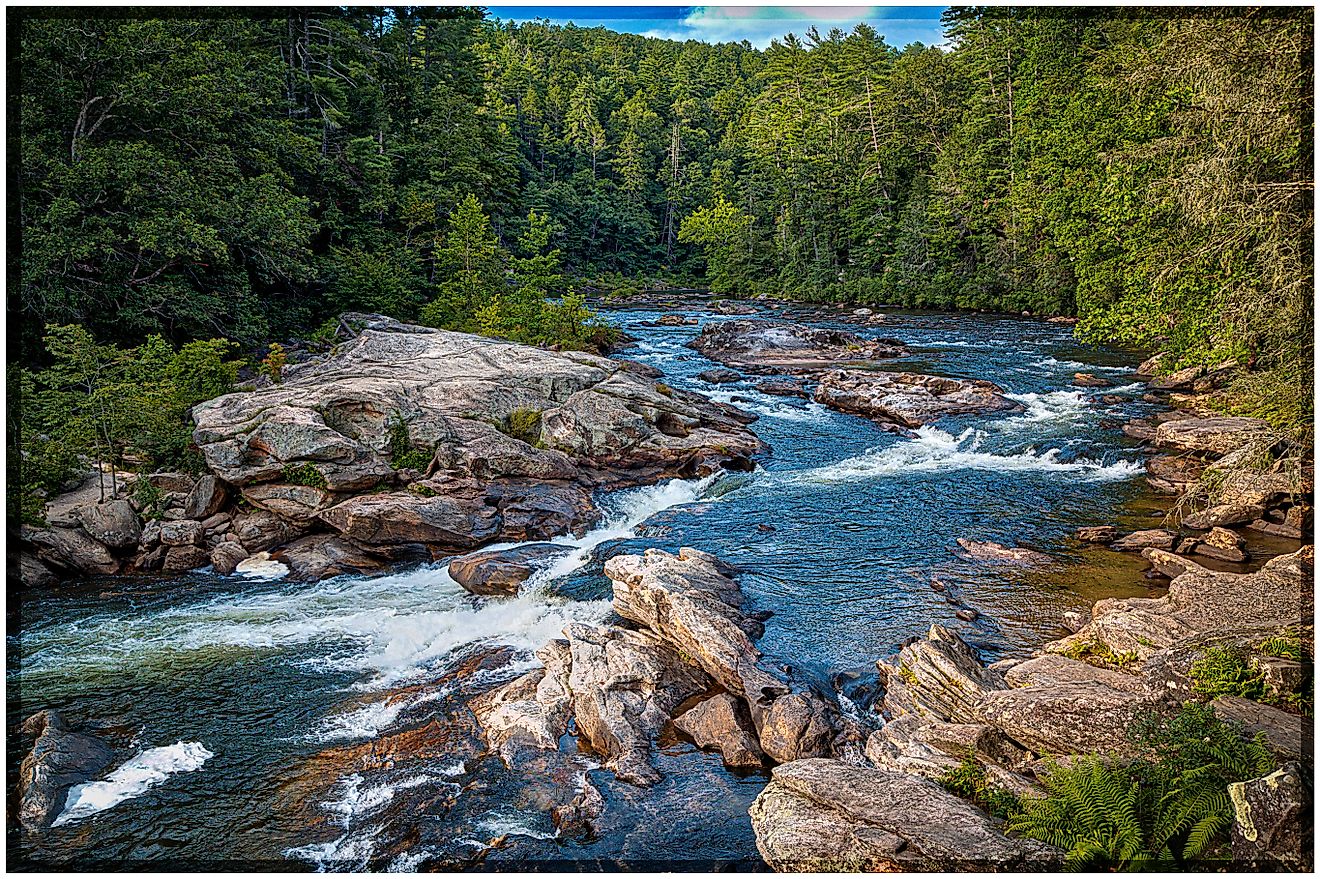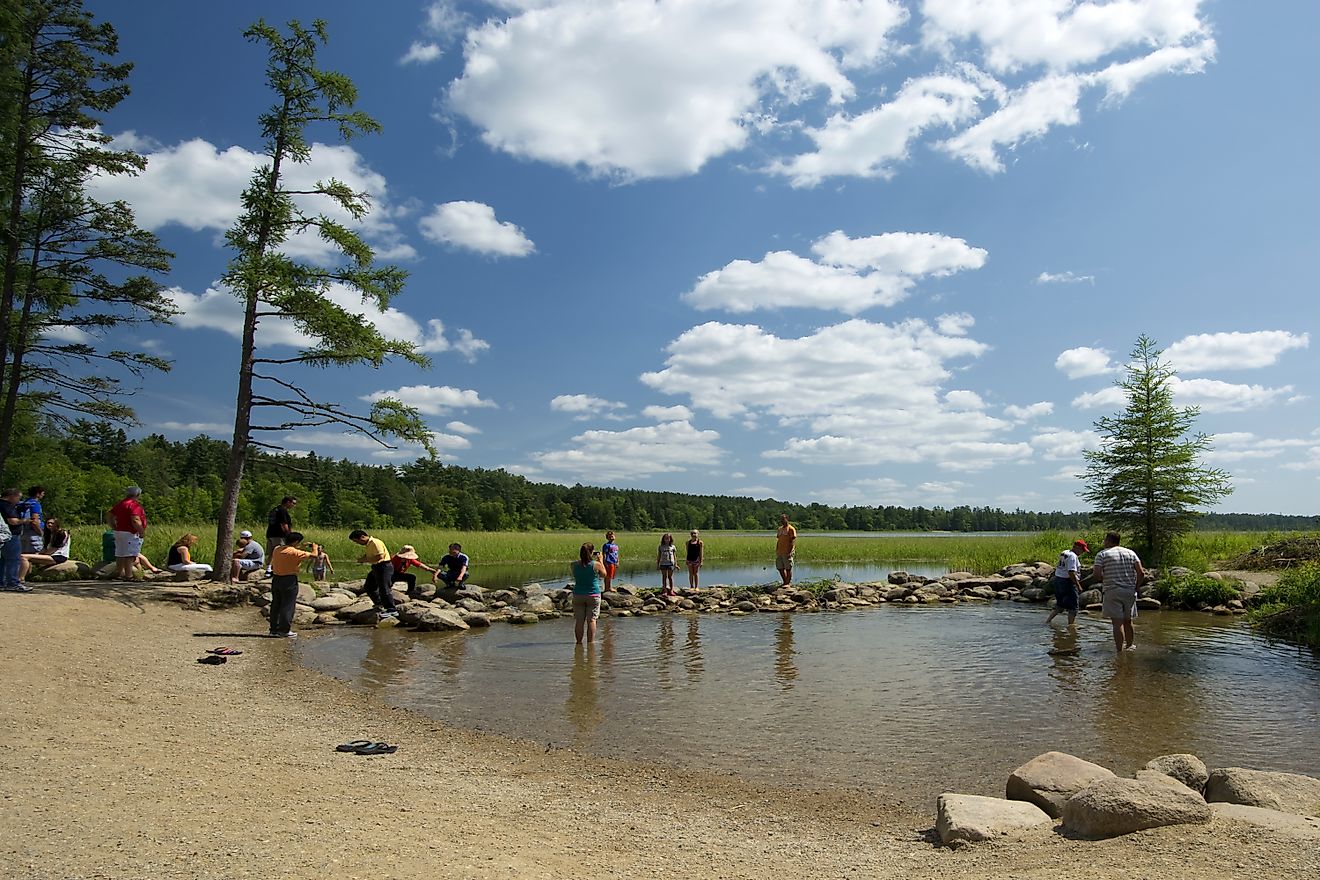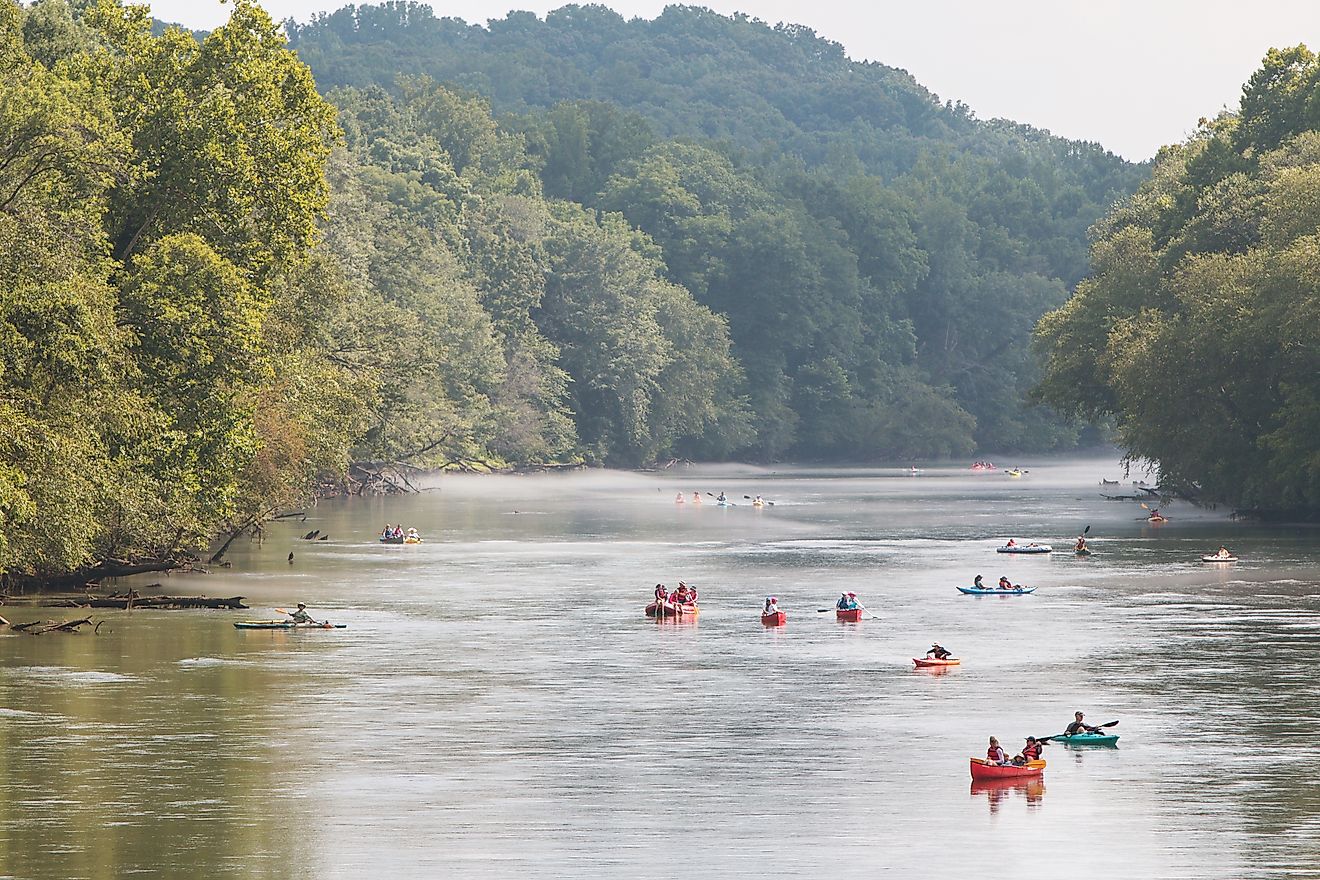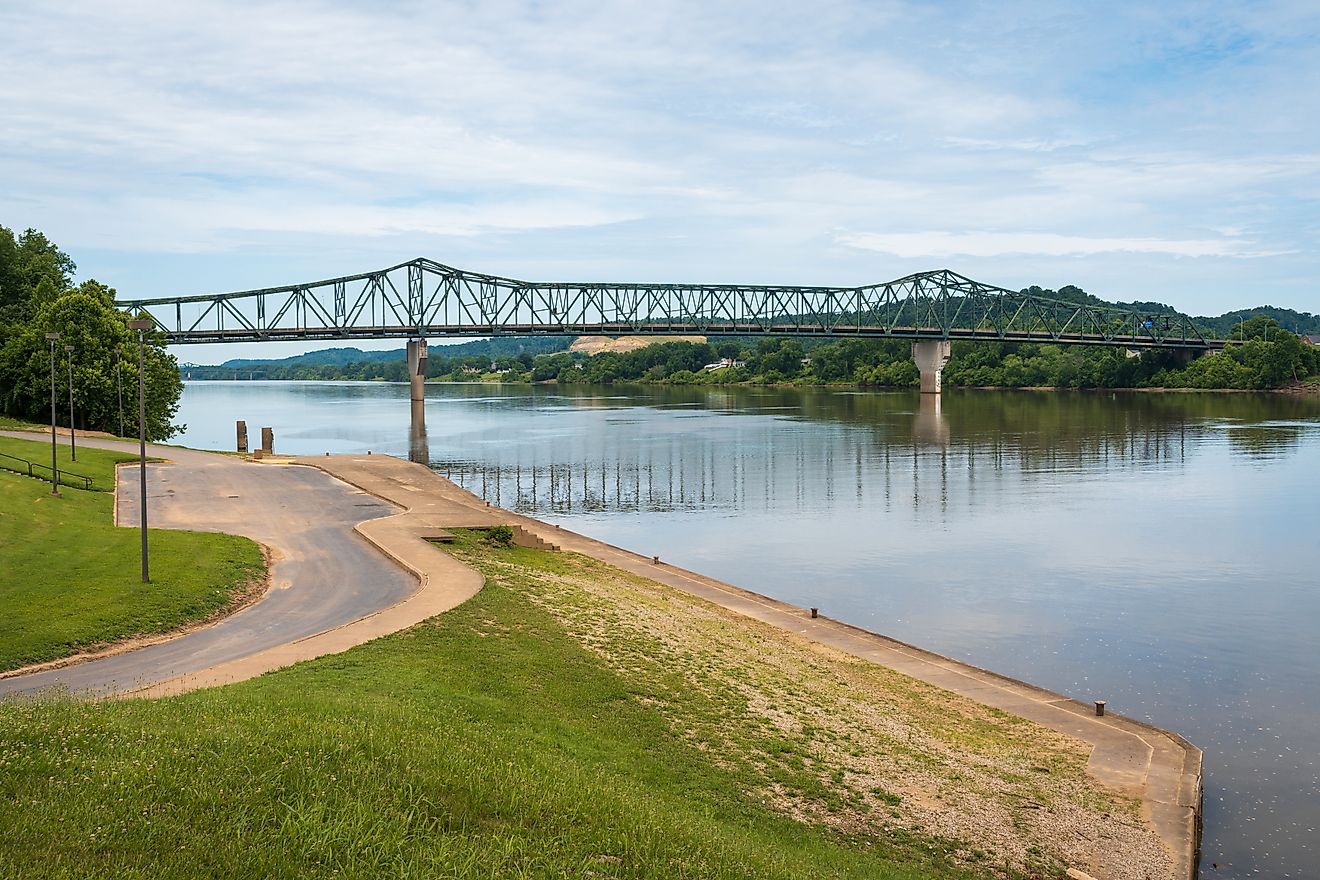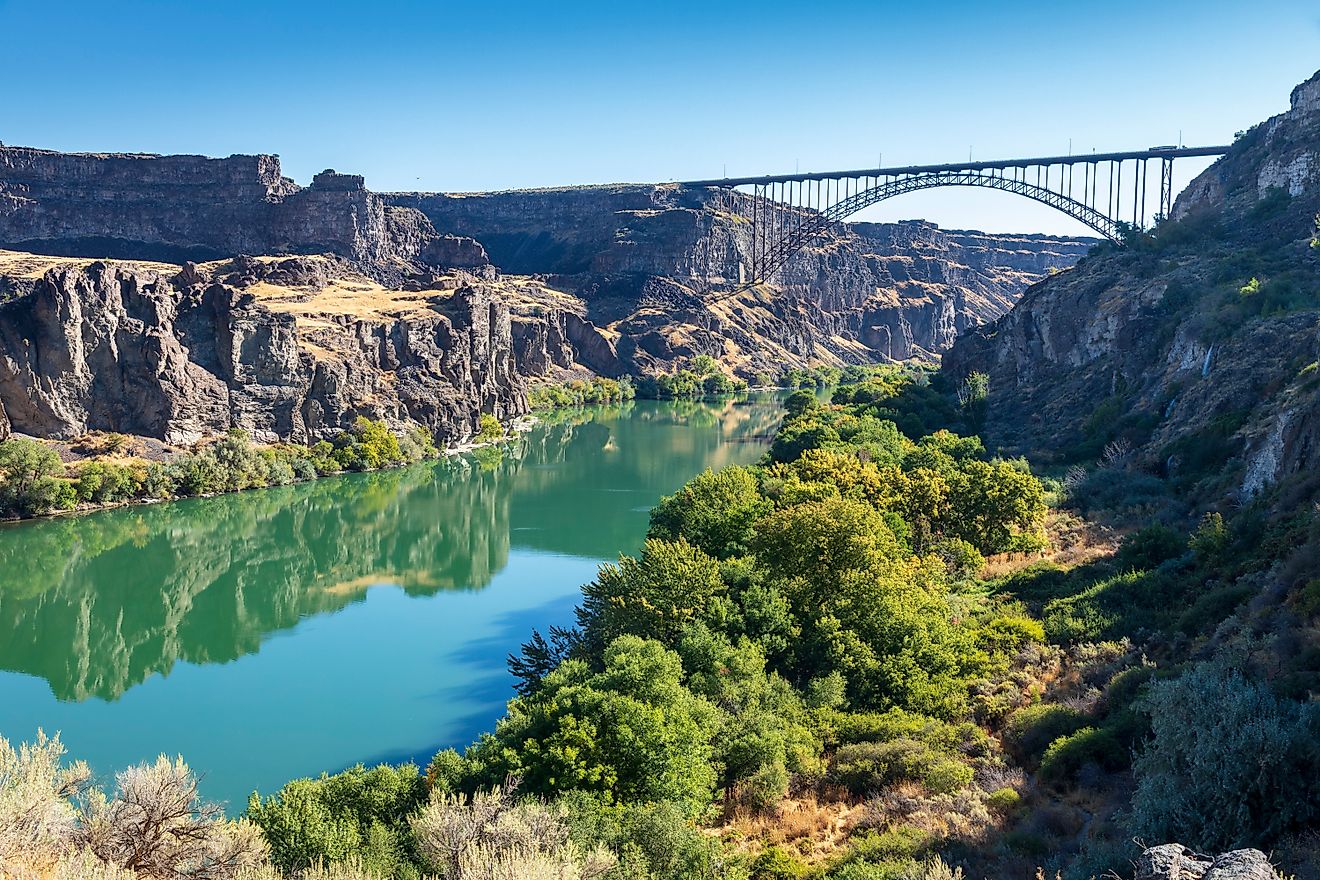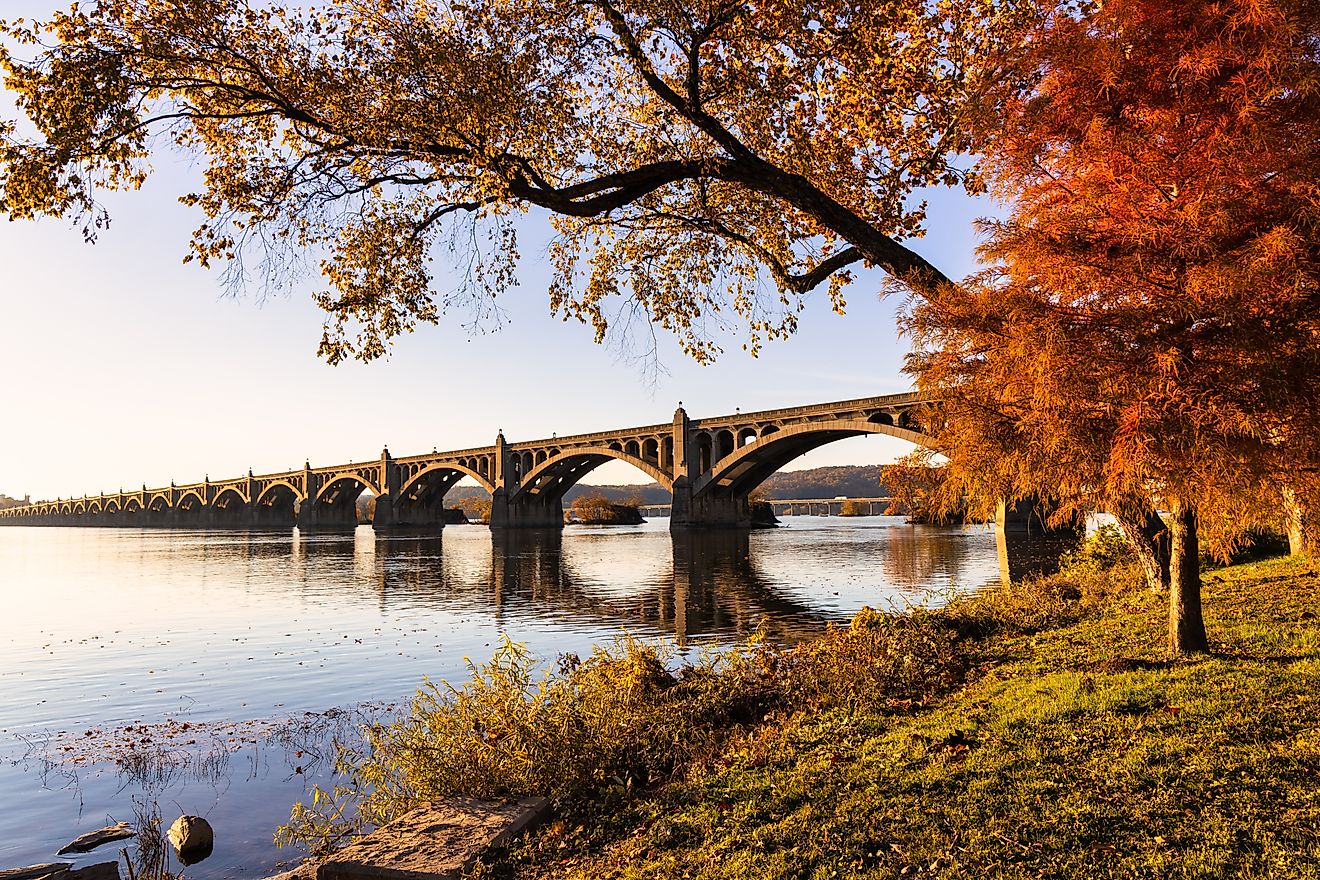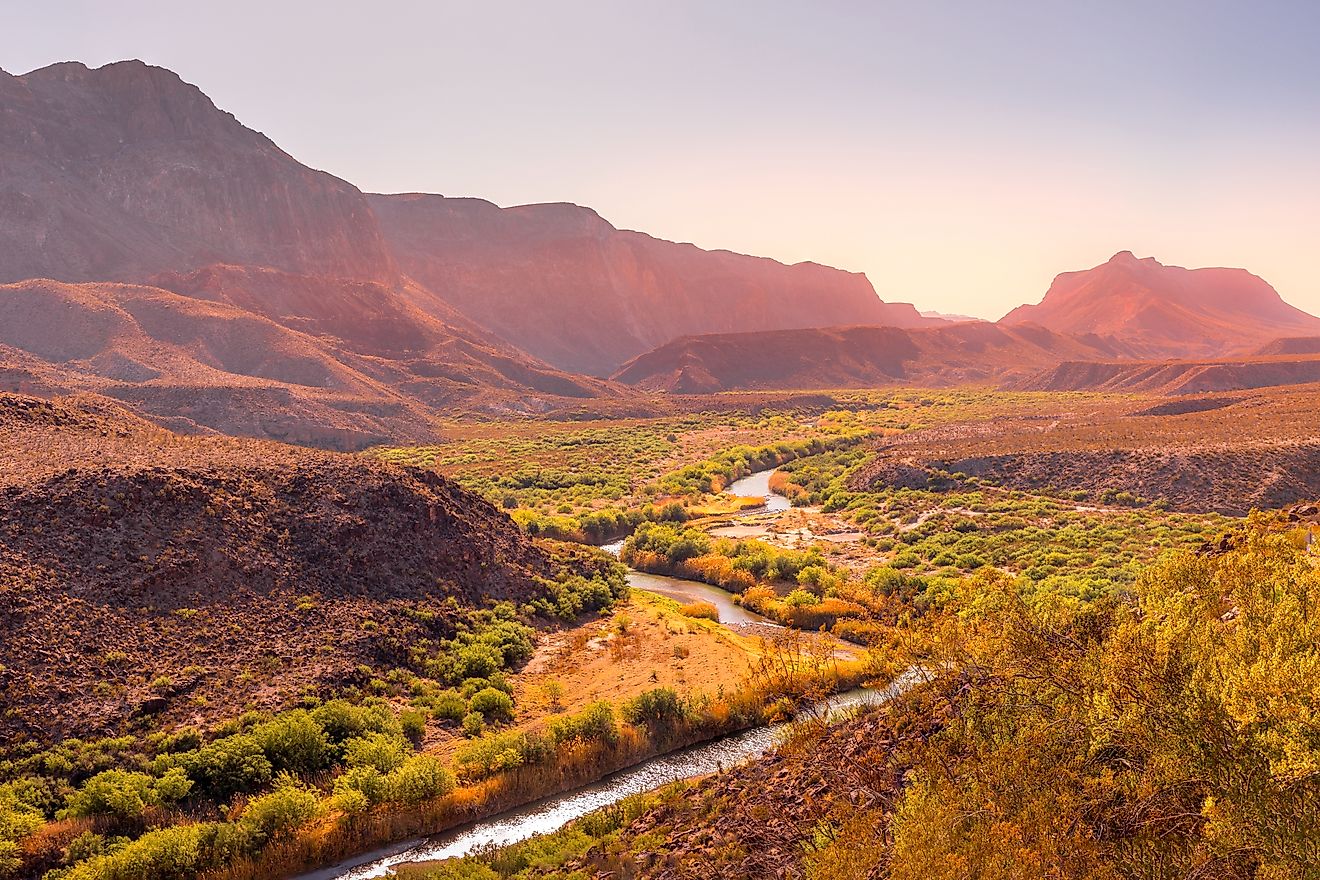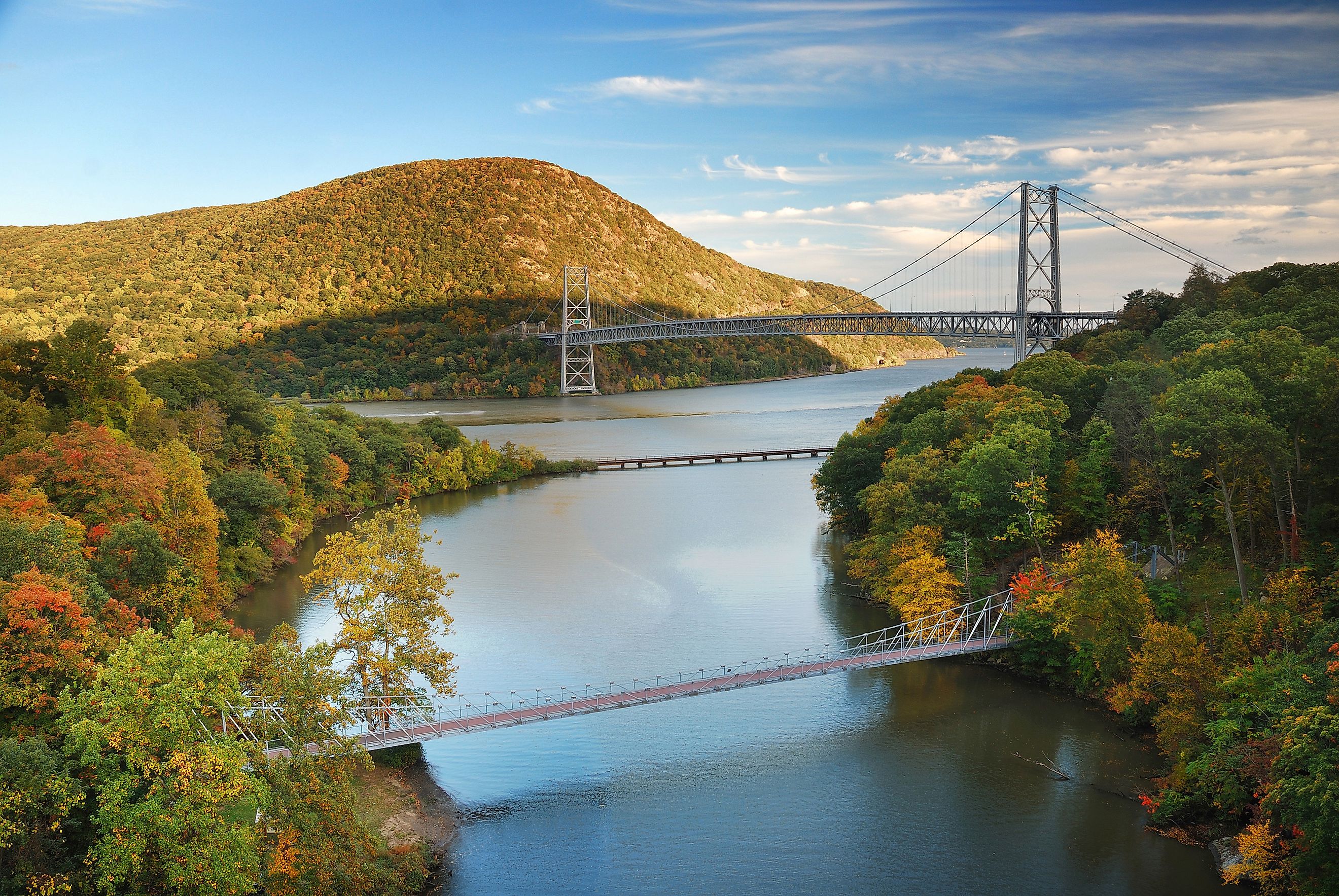
Hudson River
Stretching 315 miles through the heart of New York State, the Hudson River stands as one of the most historically and geographically significant waterways in the United States. Originating in the pristine postglacial lakes of the Adirondack Mountains, the river winds its way southward, forming a vital lifeline for the regions it traverses before emptying into the Atlantic Ocean at New York Harbor. Beyond its physical presence, the Hudson has shaped commerce, culture, and history, earning a revered status in the American narrative.
Geography and Course
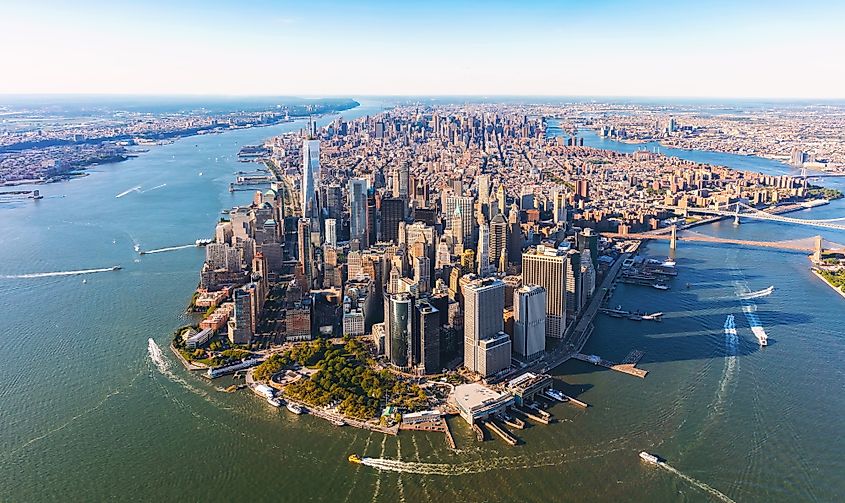
The Hudson River originates from Lake Tear of the Clouds, nestled near Mount Marcy, the highest peak in New York State. Its headstream, the Opalescent River, feeds into the Hudson, setting it on its course through a diverse landscape. For the first 108 miles, the river meanders southeast to Corinth in Saratoga County before shifting direction to Hudson Falls. From there, it flows nearly straight south for 200 miles, cutting through the Hudson Valley before reaching the Battery in New York City.
The river’s drainage basin covers approximately 13,370 square miles, and its lower 150-mile stretch follows a drowned valley that extends 200 miles into the Atlantic via a deep submarine canyon. The tides influence the river as far north as Troy, where fluctuations can reach up to 4.7 feet. At its widest point—Haverstraw Bay between Westchester and Rockland counties—the river expands to 3 miles across before narrowing to less than a mile at its mouth.
Historical Significance
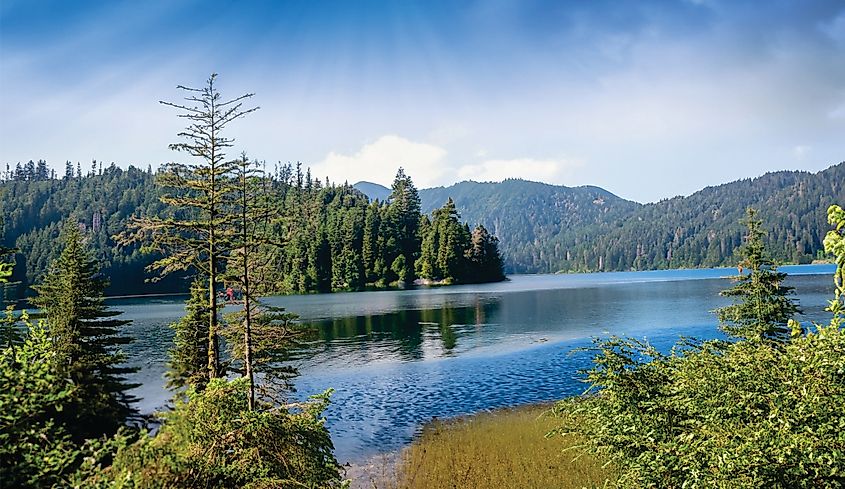
For centuries, the Hudson River has played an integral role in the development of the region. Long before European exploration, the Mahican (Mohican) people referred to it as Muhheakunnuk, meaning “Great Waters Constantly in Motion.” The first European known to have sailed the river was the Florentine navigator Giovanni da Verrazzano in 1524, but it was the English explorer Henry Hudson, sailing under the Dutch flag in 1609, who left his name imprinted on history.
The river’s banks were quickly settled by the Dutch in the early 17th century, leading to the establishment of trade and agricultural communities that would flourish over the next two centuries. The tranquil beauty of the Hudson Valley inspired the works of famed American author Washington Irving and the Hudson River School of landscape painters, further cementing the river’s place in cultural history.
During the American Revolution, the Hudson was a strategic artery, witnessing key battles, including the turning-point victory at Saratoga. The river was also the backdrop to one of the most infamous acts of treason in American history—Benedict Arnold’s attempt to surrender West Point to the British. In 1782, General George Washington made his headquarters at Newburgh, along the west bank, where he later disbanded the Continental Army.
Economic Impact and Navigation
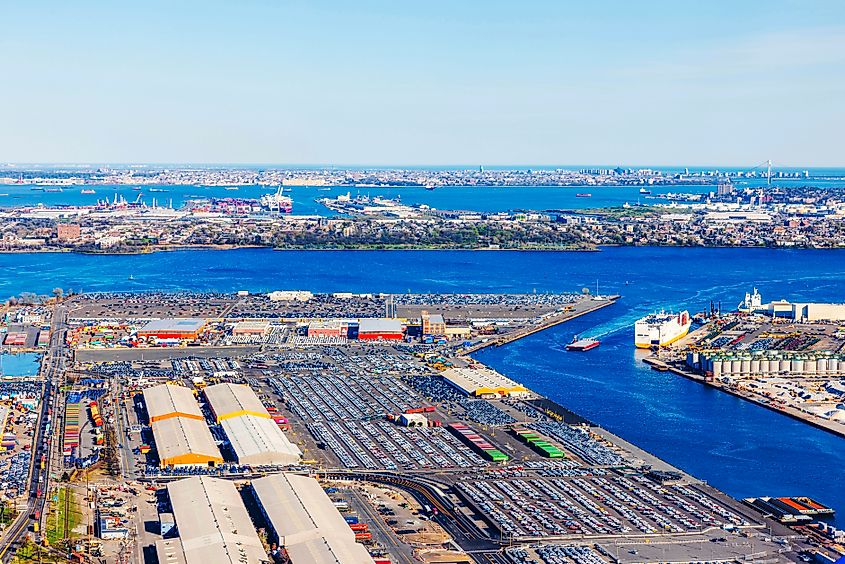
The Hudson River has long been a vital commercial thoroughfare, linking the interior of New York State with global markets. The construction of three crucial canals in the 19th century—the Erie, Delaware and Hudson, and Champlain—transformed the river into a major transportation hub, connecting it to the Great Lakes and beyond. This infrastructure spurred the economic growth of both New York City and the Midwest, facilitating the movement of goods and people.
Practical steam navigation, pioneered by Robert Fulton in 1807, turned the Hudson into a bustling corridor for trade and travel. Throughout the 19th century, its shores were lined with prosperous towns benefiting from industries such as whaling and interoceanic shipping. Even today, the river remains a vital conduit for transporting cargo like wood pulp, steel, cocoa beans, and grain.
Navigational improvements have been ongoing since 1797, and in 1892, the Hudson was officially designated a federal waterway. Oceangoing ships can navigate to Albany year-round, while the river remains open to pleasure boats and tugboat-barge traffic between May and November. Numerous bridges and tunnels facilitate modern transportation across the river, including the iconic George Washington Bridge and the recently reconstructed Tappan Zee Bridge, now named the Mario M. Cuomo Bridge.
Environmental Challenges and Conservation Efforts
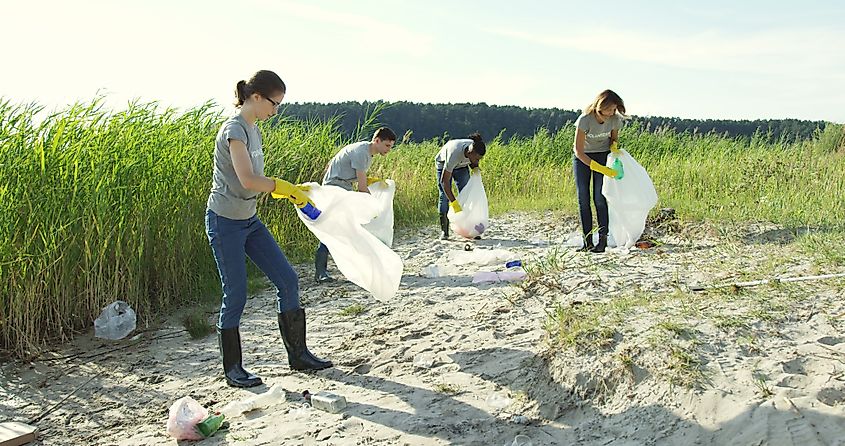
Despite its historical and economic importance, the Hudson River has faced severe environmental challenges over the years. Industrial waste, raw sewage, and pollutants from manufacturing plants have significantly degraded its waters. For much of the 20th century, the river was plagued by contamination, leading to declines in fish populations and water quality.
However, grassroots conservation movements and government-led clean-up initiatives have worked tirelessly to restore the Hudson’s ecological balance. Organizations such as Riverkeeper and Scenic Hudson have been instrumental in advocating for stricter environmental protections. State and federal programs have invested in wastewater treatment facilities and pollution reduction strategies, making significant strides toward revitalizing the river.
Cultural and Recreational Significance
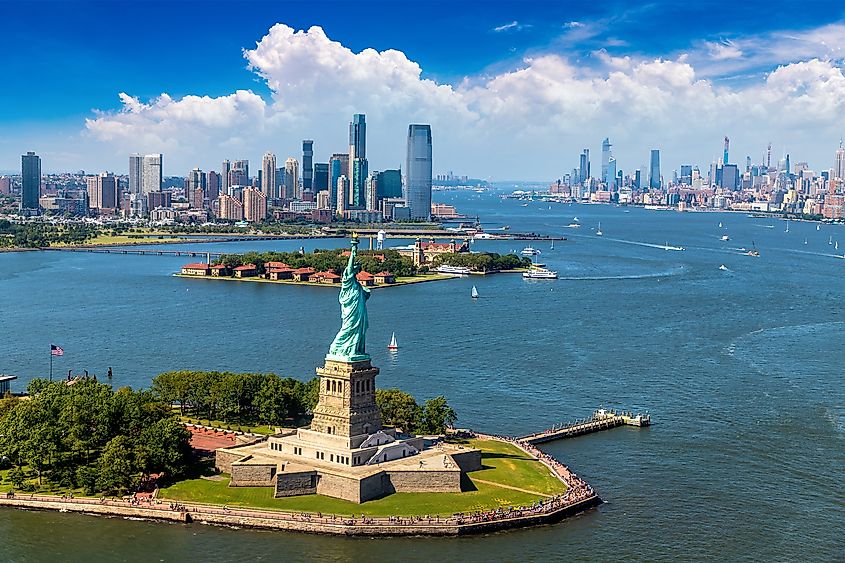
Today, the Hudson River is not only a commercial waterway but also a cherished natural and recreational resource. The scenic beauty of the Hudson Valley continues to attract artists, writers, and outdoor enthusiasts. The river supports a thriving tourism industry, with boating, fishing, and hiking drawing visitors year-round.
Landmarks such as the U.S. Military Academy at West Point, the historic town of Hyde Park—home to President Franklin D. Roosevelt—and the Palisades cliffs offer glimpses into the rich history surrounding the river. Festivals, waterfront parks, and river cruises celebrate the Hudson’s enduring legacy, ensuring that its story remains a vital part of American heritage.
